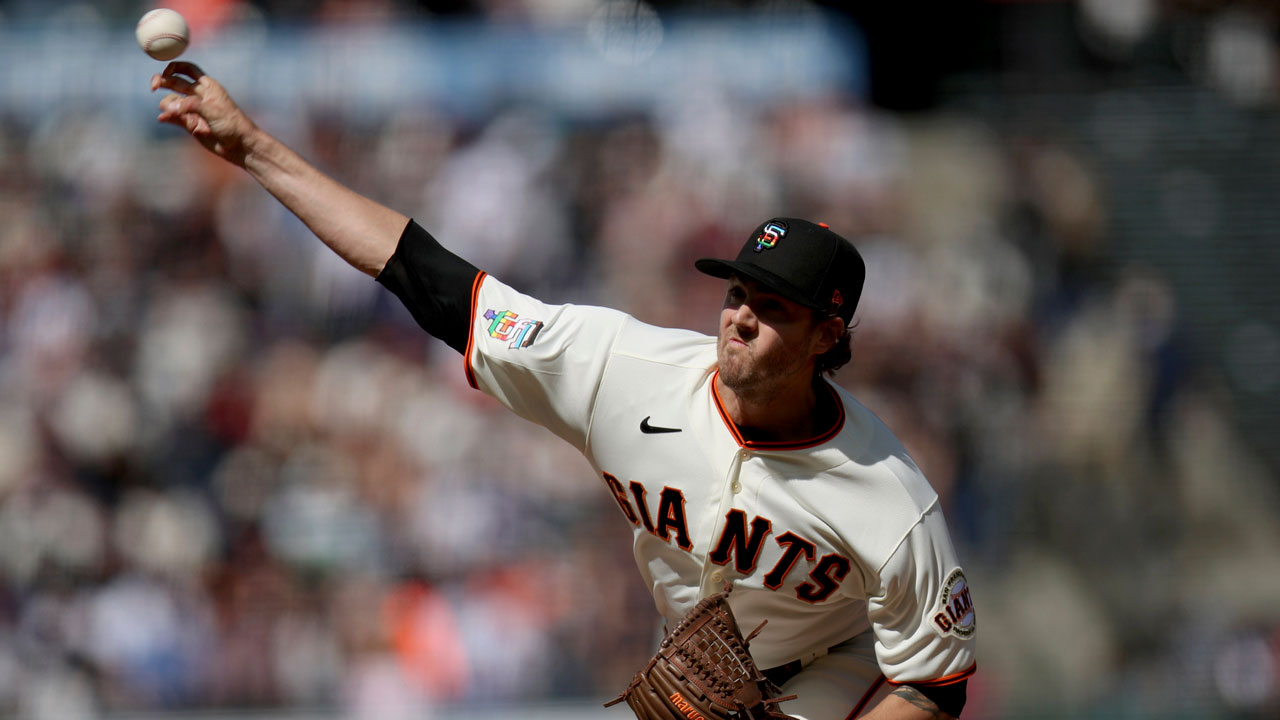
You’ve certainly seen a gif or two of Kevin Gausman’s splitter floating around by now. Probably more like 17. They’re endless. San Diego Padres spinning from their heels as power hacks come up empty. Los Angeles Dodgers dropping to their back knees chasing balls torpedoing at their shoelaces. Arizona Diamondbacks looking skyward, angrily removing batting gloves while Gausman strides back to his dugout.
Gausman’s routinely made some of MLB’s best hitters look utterly foolish over the last two seasons. But the real fun is in dialing up clips of him facing fellow pitchers. See, when Manny Machado or Ketel Marte get chewed up by Gausman they at least look like they have a chance. Put a pitcher in the box and it’s as close as we can get to what you might look like trying to hit this guy. Here’s poor Rich Hill going down on three pitches this August:
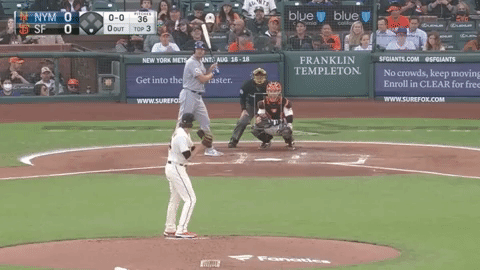
That’s the good stuff. Have you ever seen a 41-year-old man look so defeated? (Actually, don’t answer that.) Gausman’s nasty. His splitter’s ridiculous. His highlight reel is rich — and he’s going to be adding to it in a Toronto Blue Jays uniform for the next half-decade after agreeing to terms on a five-year, $110-million contract with the club on Sunday.
In adding Gausman on that deal, the Blue Jays are making a big bet on his ability to keep pairing a top-10 ERA with an 85th-percentile strikeout rate as he has over the last two years. A big bet on sustained command from a right-hander who’s posted a 6.5 per cent or lower walk rate in three of his last four seasons. A big bet on the durability of a 30-year-old with the 11th-most starts and innings pitched MLB-wide since 2016. And a big bet on that devastating splitter continuing to leave hitters spinning on heels and dropping to knees.
It’s an uncommon pitch — one used regularly (minimum 50 thrown) by only 40 pitchers in MLB last season. Of that group, only five used it for a greater proportion of their total pitches than Gausman did. And no one used it as effectively.
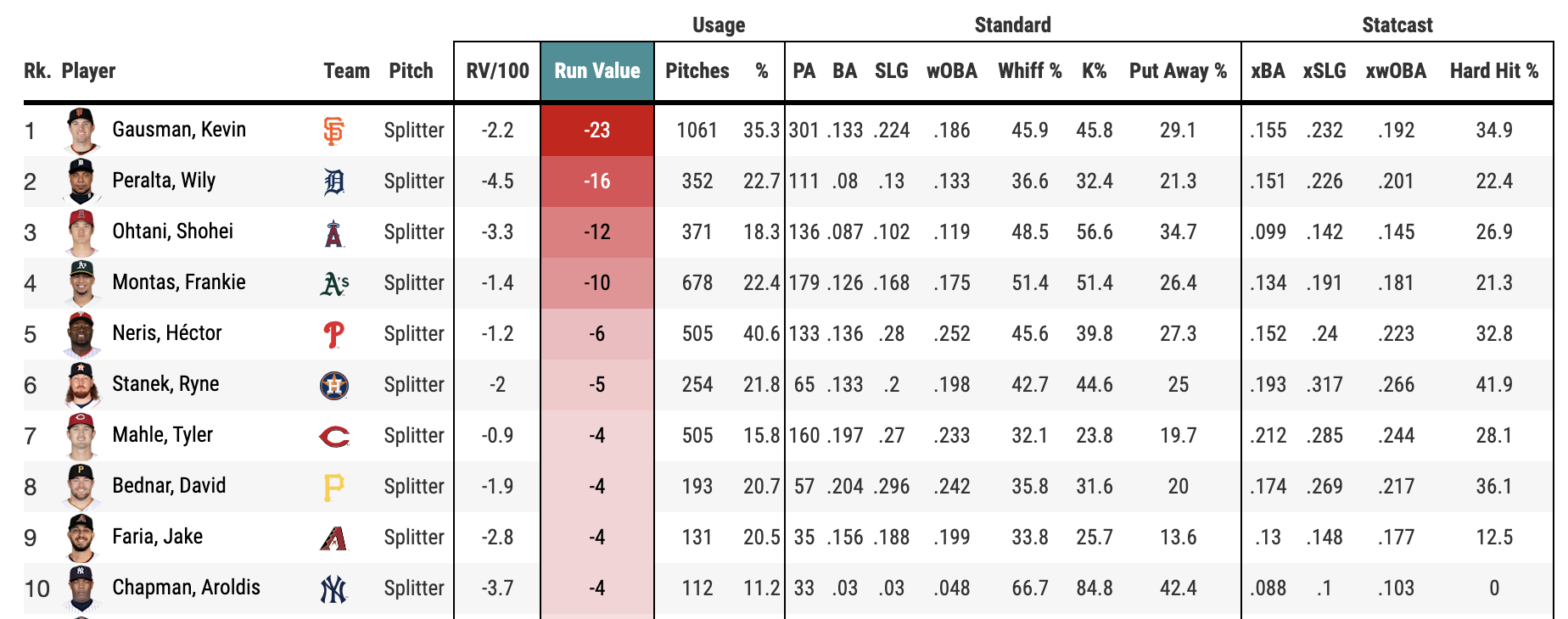
You can make an argument that Gausman doesn’t only throw the game’s best splitter — but the game’s best single pitch. The .192 xwOBA hitters managed against it in 2021 was the lowest of any MLB offering. The 45.9 per cent whiff rate Gausman generated with it trailed only Dylan Cease’s slider. Look at any StatCast leaderboard ranking the metrics of MLB’s most devastating weapons — Charlie Morton’s curveball, Robbie Ray’s slider, Lance Lynn’s fastball — and Gausman’s splitter is reliably at or near the top.
But no matter how nasty a pitch is, you can’t just throw it repeatedly expecting hitters to continue chasing. You have to complement it, set it up, play it off something. Gausman does that was a fastball — a somewhat ordinary one by modern MLB standards at 94-95 m.p.h. with decent spin and above-average horizontal break. But one that that plays up immensely thanks to the threat of his splitter, which Gausman throws with a nearly identical arm angle and release point.
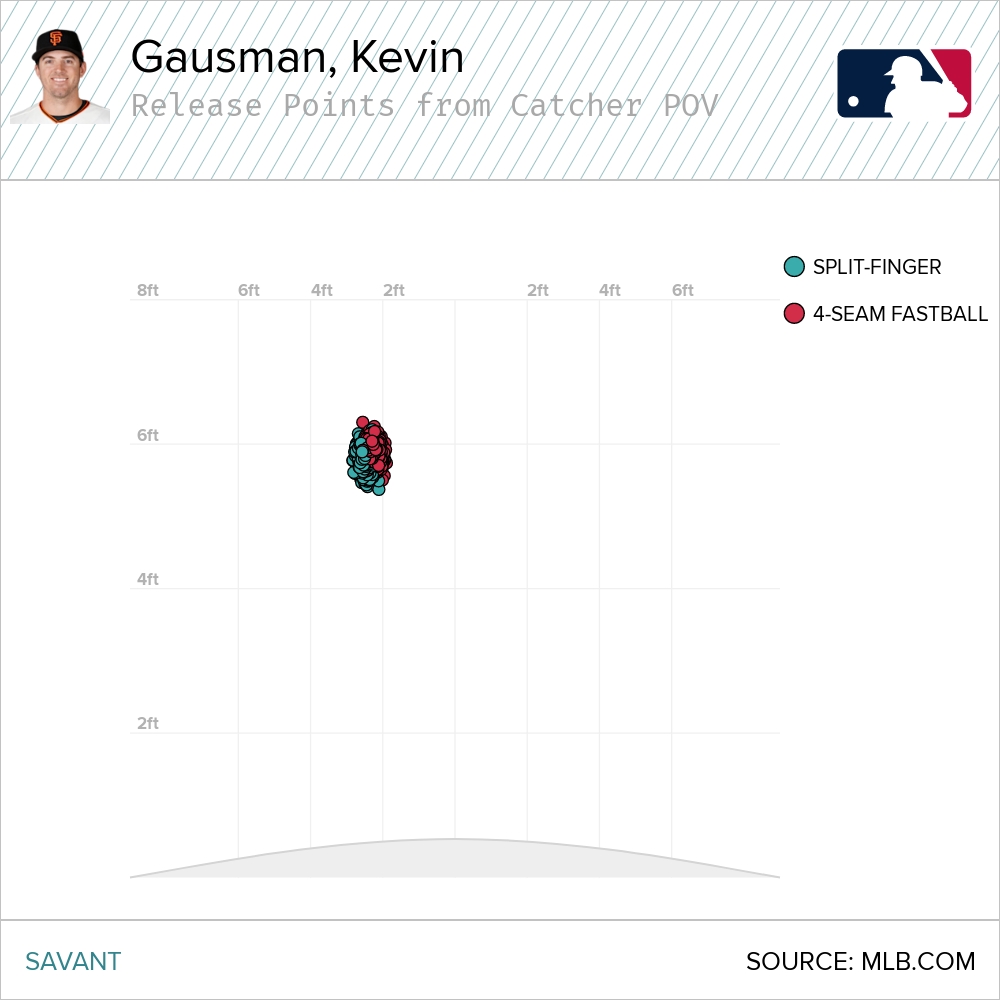
That makes the two pitches appear virtually indistinguishable out of his hand before moving in wildly different directions over the four-tenths of a second it takes them to reach home plate. Gausman’s fastball will run a bit in to right-handed hitters and away from left-handers while staying relatively level on a downward plane from the mound. His splitter, meanwhile, will feature that same horizontal action but suddenly drop nearly two feet further than the fastball while moving 10 m.p.h. slower.
Those first two pitches to Hill — a fastball followed by a splitter — are a pretty good example of this. Here they are again, followed by an overlay of the two clips:
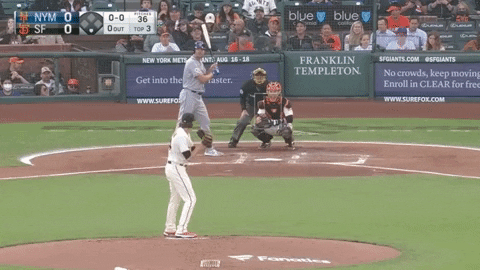
Same arm angle, same release point, same lane towards the plate — radically different end point and speed. That’s the trick. And keep in mind, this is Gausman laying off the gas and taking it relatively easy on Hill at 91-m.p.h with the heater and 79 with the splitter. Typically, against an actual hitter like Cody Bellinger, Gausman’s reaching back to throw them at 95 and 84. Here’s what that looks like:
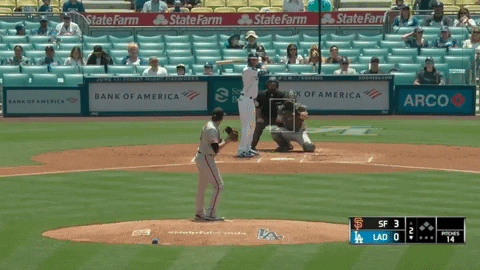
As a hitter, when Gausman’s tunneling these two pitches effectively, while maintaining a consistent delivery and arm action, you’re essentially left to guess which pitch you’re getting. They stay so similar for so long that by the time you can process the deception and recognize speed or movement, it’s too late to execute a strong swing.
You have to try thinking along with Gausman, recalling scouting reports and previous in-game patterns to predict which pitch he’s most likely to throw next. And even on the occasions you guess correctly — it’s a 50/50 proposition, after all — you still have to use your round object to hit another round object that’s moving both horizontally and vertically with extreme speed.
That’s something left-handed hitters have long had trouble with, as that side of the platoon carries a .702 OPS against Gausman over the course of his career. But a 2020 adjustment that took Gausman from pretty good to legitimately great was deploying his two primary pitches more effectively against right-handers, who had a .791 OPS against him through the end of 2019, but have struggled to a .622 OPS over the two seasons since.
What changed? For starters, he began using his splitter against right-handers much more often, throwing it well over 30 per cent of the time to that side of the platoon after featuring it in the mid-to-high teen’s through the first half-dozen seasons of his career.

He started locating it differently, too. Through 2019, Gausman typically used his splitter towards the lower inside corner against right-handers. From 2020 on, he’s more often thrown it closer to the centre of the plate while letting the pitch’s huge downward action carry it beneath the zone. On the left is Gausman’s splitter location to right-handed hitters through 2019 and on the right is where it’s been since 2020:
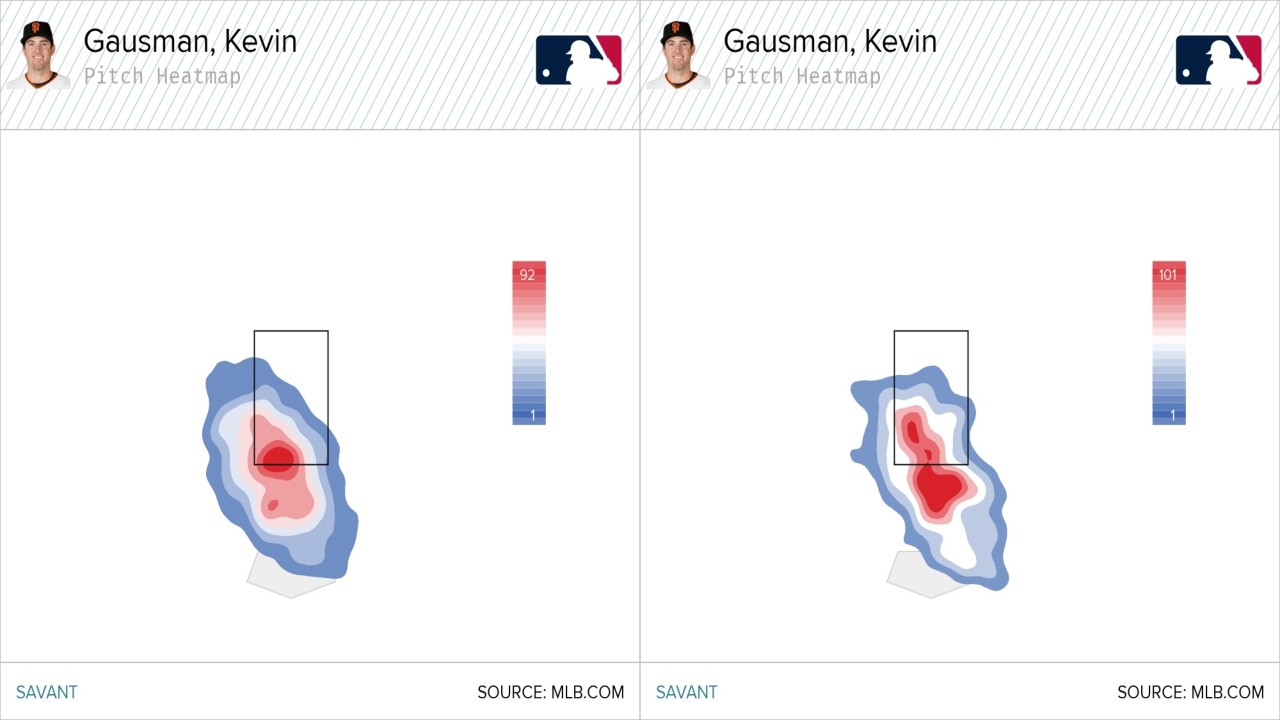
That location tweak has helped Gausman get more swing-and-miss and weak contact with his splitter. It’s pretty tough for a hitter to barrel a pitch at their shins. But, again, this doesn’t work in isolation. Gausman needs to be using his fastball effectively to set the pitch up. Which is where another very small tweak comes in. On the left is Gausman’s fastball location to right-handed hitters through 2019; on the right is since 2020:
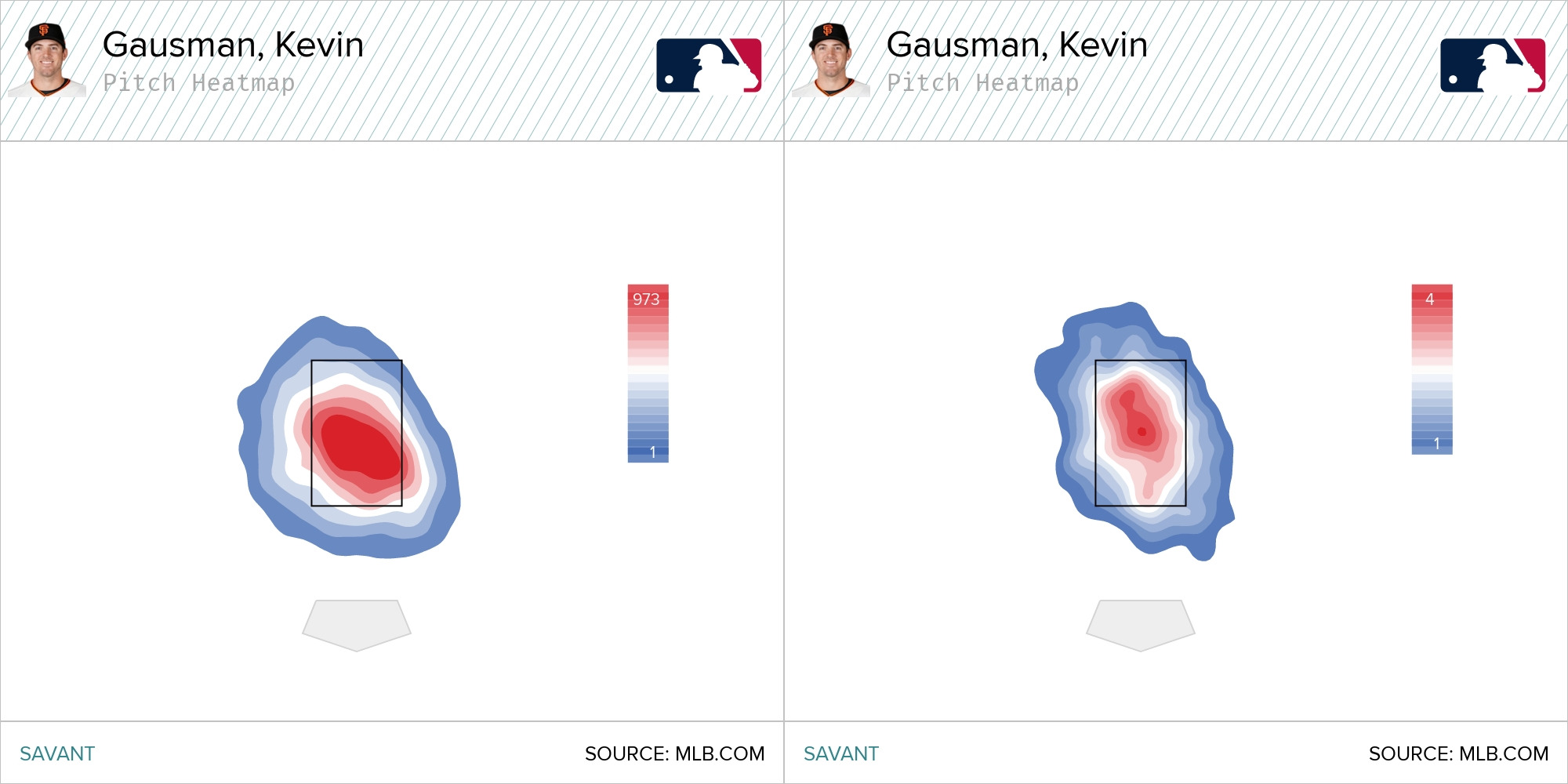
Like many of his MLB colleagues, Gausman has embraced the elevated heater. It’s a trend that’s grown popular as a counter to hitters chasing launch angle and trying to keep the ball off the ground by adding loft to their swings. As hitters swung up, pitchers pitched even higher to try to beat those swings or generate weak flyball and pop-up contact. That’s reflected in Gausman’s results, as his flyball rates in 2020 (35.8 per cent) and 2021 (36.5) were his highest since 2015.
But what makes this approach even more effective for a pitcher like Gausman is it’s created more disparity between his fastball and splitter. It’s one thing to elevate a fastball when you’re mixing it with a slider that moves horizontally on a similar plane to the edges of the plate. It’s another to throw high heaters when your secondary offering plunges vertically towards the bottom of the zone.
That’s why Gausman can get a high amount of swing-and-miss with fastballs on the plate. Hitters often swing right under the pitch because they’re guarding against the drop on his splitter. Here’s the location of the 122 fastballs Gausman got whiffs on in the zone — eighth-most across MLB — last season:
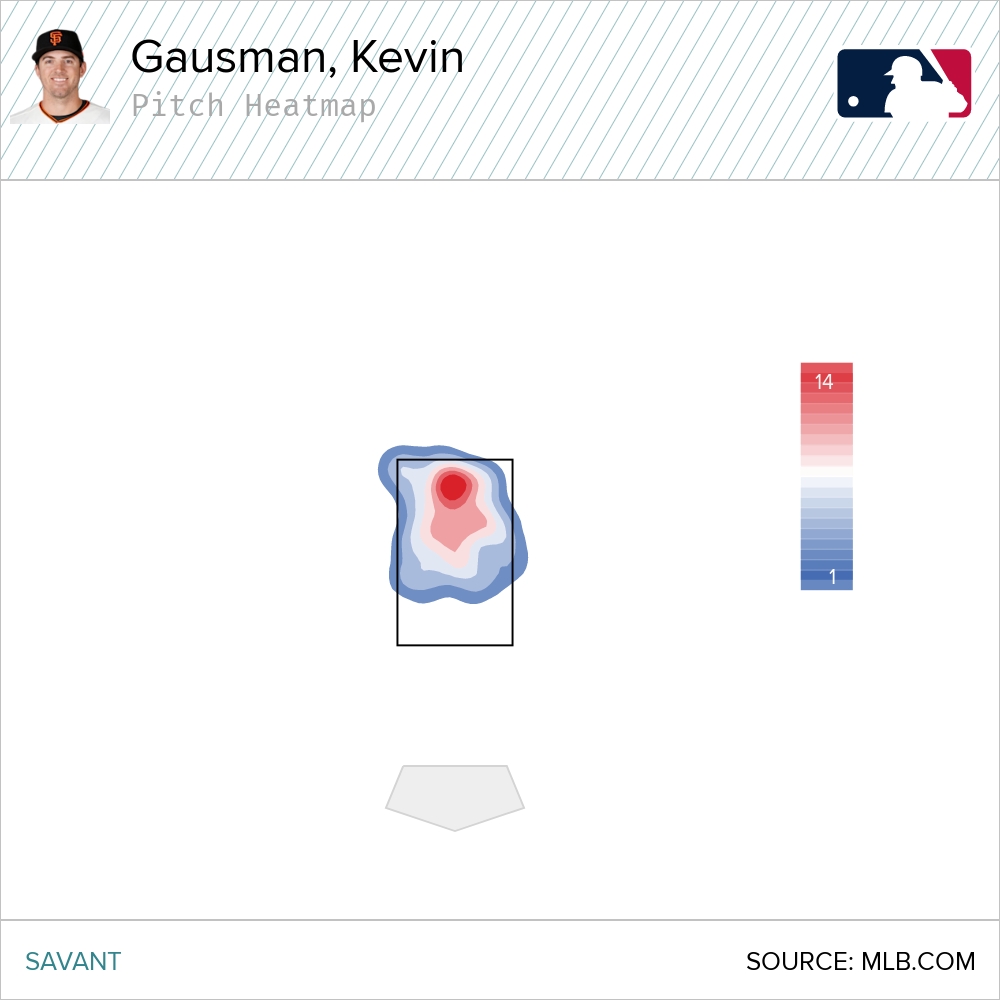
Up, up, up. Here’s a good example from an encounter with Joey Votto in April. Gausman works backwards, going splitter, fastball, splitter, fastball, fastball to get one of the game’s best hitters to strike out swinging, missing a pair of fastballs up and over the plate:

And where was Votto’s bat on the two hittable fastballs he missed?

Right under it. That’s the formula. Fastballs up, splitters down. Repeating delivery, arm angle, and release point. Tunnelling, sequencing, and deception. It starts with the game’s best splitter — maybe the game’s best pitch. But it’s all the other stuff that helps make Gausman as good as he is.




